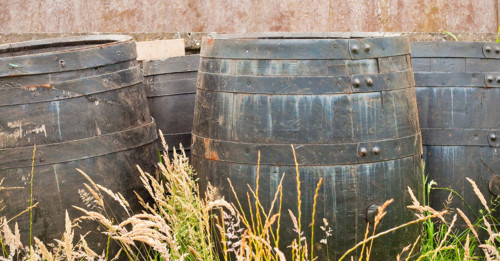When beer is brewed commercially, it’s most often fermented “single culture” style, which is to say, with one of two kinds of yeast: Saccharomyces cerevisiae or Saccharomyces pastorianus. The former is responsible for the ale we drink, while the latter, thanks to its ability to withstand colder temperatures, is responsible for the low-and-slow fermentation that produces lagers. This might wrap up the story of yeast and fermentation in brewing, except beer is never that simple.
And that’s a good thing (a great thing, really) because that leaves room for a third, slightly unpredictable kind of fermentation: the wild kind.
Beer—remember, made with malt, hops, water, and yeast—wasn’t always defined as such. Yeast wasn’t even included in the original German Beer Purity Law (or “Reinheitsgebot,” and try saying that three times fast). It was only added after Louis Pasteur figured out that it was yeast doing the fermenting; prior to that, yeast had simply been unknowingly passed on from beer to beer when brewers would start a new batch from an old one, heroically doing all the work of fermenting with no credit.
But the original fermentation of beer had to have been done by ambient yeast—or yeast that simply lived in the surrounding environment wherever that first beer was brewed. As brewing developed, and was eventually regulated, yeasts like S. cerevisiae and then S. pastorianus were cultivated for their ability to develop consistently good beers.
That doesn’t mean brewers abandoned their wild side. Yeast strains like Saccharomyces but also Brettanomyces and wild microbes like Pediococcus and Lactobacillus are key players in wild fermentation, though today “wild” fermentation is typically controlled, with wild microbes carefully selected, cultured, and controlled as much as possible to yield a particular flavor profile. Brettanomyces, also called “Brett” in the industry, yields flavors sometimes associated with barnyard (think funk, spice, even gaminess), while Lactobacillus creates lactic acid (producing a sour taste) and Pediococcus, generally considered a contaminant, also creates lactic acid as well as something called diacetyl, which imparts welcome (or unwelcome) flavors of butter/butterscotch (think of a “butter bomb” Chardonnay).
Of course, inviting wild microbes into your beer to party seems to go against the grain of most brewing practices. Brewing generally involves tons of sanitation—think gloves, hoses, a careful, consistent effort to keep unwanted microbes out of every stage of the process, especially fermentation. And wild fermentation can be done under the same controlled environment, with wild microbes in place of the classic yeasts.
But some breweries are experimenting with old school fermentation, basically brewing from their own ambient environments, trying to see what kind of beers are yielded from unexpected microbial cameos. Allagash in Maine has experimented with what’s called a Coolship, a tank built specifically for spontaneous fermentation, with a boldly, totally open top that allows passing microbes to breeze by and possibly drop into a vat of waiting wort. It’s a gamble, sure. But that’s part of the culture.
